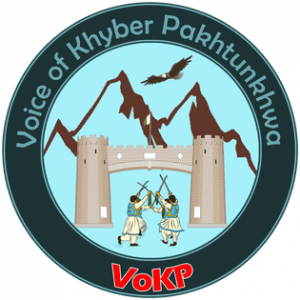SALMAN AHMAD
Social Media (SM); the platforms of social interaction, instituted for sharing ideas, knowledge, awareness, and infotainment have transformed into a kind of battlefield that has blurred demarcation. As a tool of propaganda and disinformation, weaponization of SM has drastically increased in recent years. Instead of attacking militaries and economic infrastructure, hostile forces now target masses in a society, influencing their behaviors, beliefs and diminishing their trust in government and state institutions through cyber operations. The recent flood of propaganda campaigns radically disturbed the socio-political fabric of Pakistani society by indoctrinating and manipulating the public, especially the youth.
Several SM platforms including Facebook, Twitter, YouTube, Instagram, TikTok, and Snapchat are commonly used in Pakistan for social interaction and communication. According to Datareportal DIGITAL 2022 report, 71.70 out of 82.90 million internet users in Pakistan are Social Media users, that is equivalent to 31.5 percent of the country’s overall population. The report suggests that YouTube had 71.70 million, Facebook had 43.55 million, Instagram had 13.75 million, TikTok had 18.26 million, Snapchat had 18.80 million and Twitter had 3.40 million users in Pakistan by January 2022.
Social Media, on the one hand being used for information, entertainment, and product marketing while on the other hand is subjected to manipulation, exploitation and spreading of false narratives. Politicians, religious extremists, sub-nationalists and different interest/ pressure groups are using Social Media for their campaigns, mass mobilization & perception management and control.
Challenges of this hybrid war are multifaceted. On internal front; sub-nationalists, religious extremists & terrorists, disgruntled political forces and other agents of chaos utilize SM as weapon against the state. On external front; Social networking sites have been found projecting Pakistan negatively damaging Pakistan’s image globally. India and other hostile countries are on the forefront to use this tool to harm Pakistan’s interests
Hostile political forces and sub-nationalist elements are rigorously investing in SM not only for the promotion of their political ideologies but also for their nefarious designs to damage the credibility of state institutions. Political forces (both the left and the right wings) are aggressively using SM for their political narrativization as pressure-building techniques. As a recent case study, Pashtun Tahaffuz Movement (PTM) is tactfully utilizing these social networking sites to attract international and local audiences and amplify narratives. Baloch anti-state anarchists are also utilizing SM not only for the amplification of their anti-state activities but also for indoctrination of Baloch youth.
EU Disinfect Lab has recently unveiled an Indian-sponsored propaganda network consist of hundreds of Fake News and SM outlets working globally against the interest of Pakistan. India is also known for utilizing massive monetary resources in western capitals for Social Media propaganda. India has shifted its doctrine from conventional warfare toward cyber and information warfare.
For the purpose, not only state machinery is being used but a huge IT industry has also been established. According to some journalistic accounts, the Indian Defense Intelligence Agency (DIA) has established an information warfare agency within DIA since long which is responsible for cyber war and psychological operations along with other IT related advancements.
Present-day terrorist organizations’ members are the first generation who have grown up with access to the SM and Internet. These platforms also play critical role in the youth indoctrination and recruitment of vulnerable members of society. Terrorists also aggressively use these platforms for spreading their ideas, incitement to violence, cyber terrorism and radicalization to a much wider and boundary-less audience that was previously unimaginable. Terrorists have now obtained the ability to produce rich content on mass level and recruit anonymously.
Challenges for Pakistan to regulate cyberspace are manifold. Pakistani regulators take action against perpetrators who use SM for anti-state activities and try to regulate the platforms according to domestic laws and norms of the society. But the challenge arises when local rules contradict the rules of these SM giants. Despite formal complaints, official correspondence by the authorities and reporting by SM activists, negligible actions taken against the perpetrators.
Pakistan’s imperfect tech infrastructure, lack of tech institutions, limited number of technological start-ups and venture capital networks place Pakistan at a disadvantageous position while interacting with SM giants. They consider Pakistan as a backward location with limited advantages to warrant market research with the presence of local laws and its impartial implementation. Pakistan’s minimal economic growth provides few incentives for these SM giants to invest, as they believe more in business than activism. The Fragility of policy based administrative and regulatory framework also results in the arbitrary decisions of banning of an overall SM platform.
One of the practical solution Pakistan needs for the meeting Cyberspace challenges is the establishment of direct communication channels with the SM companies using the Pakistani tech industry. State should make liaison with civil society activists and digital rights networks both domestically & globally and make sure active participation in digital rights forums to keep state policy in consistency with international practices.
Pakistan should hire lobbying firms in western capitals to help in lobbying with SM companies as well as governments for cooperation. The state should also seek cooperation from likeminded nations including China, Turkey and Malaysia for the establishment of regional alliances and using collective resources for lobbying with SM companies.
To counter the propaganda and disinformation campaigns the Counter-Narrative and Counter-Propaganda Approaches be implemented to push back hostile actors through the tactical and strategic messaging. In societies like Pakistan, the hardliner approach is also effective which is the imposition of strict regulations against social media companies and internet providers and hitting back at propagandists with proactive information influence activities, aggressive lawfare, and kinetic & cyber operations.





